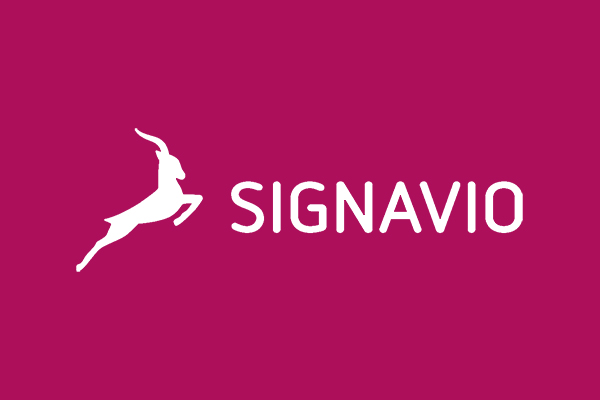Session Recap: How Ingevity Successfully Tackled Their SAP S/4HANA and Cloud Migration in the Middle of a Pandemic
By Annie Kennedy, Associate Conference Producer
Michael Mullis (MM), Chief Information Officer at Ingevity, presented the live afternoon CIO’s Perspective keynote, “How Ingevity Successfully Tackled their SAP S/4HANA and Cloud Migration in the Middle of a Pandemic” on day 2 of SAPinsider’s 2020 Virtual Conference Experience, sharing how this Global Chemicals company successfully navigated their important moves to the Cloud and built their SAP S/4HANA transformation strategy during this current economic and business disruption. The interactive session was moderated by Riz Ahmed (RA), Chief Content Officer at SAPinsider, and the two discussed how Ingevity migrated and adapted to remote working and how they were able to communicate, solve problems, and take advantage of key opportunities to improve their overall technical and business landscapes.
When evaluating vendors, Michael confided, Ingevity didn’t specifically focus on SAP as the solution, but instead asked, what do we want and need to run the business from an enterprise application perspective? Ingevity transitioned to take advantage of machine learning, real-time analytics, and other things that would have been difficult to introduce without newer technologies and ways of doing things provided by SAP S/4HANA. Questions they asked included, “We don’t have mobile solutions for employees, so where do we transform the organization?” and “How do we take some cost out through better planning, lowering inventory, payables and receivables, etc. through better visibility to data? Historically, data was a “necessary evil” in selling a product and making revenue. Now, as part of their SAP S/4HANA program, Ingevity introduced a whole data governance program to help transform the org and start to think about data as an asset.
Explore related questions
Here are a few recaps from the Q&A discussion.
RA: How do you start building the business case and bring IT and execs together? This process isn’t short or cheap; how did you get there and what did you learn?
MM: It wasn’t overnight at all. It all started with internal diagnostic, which confirmed what we knew but provided focus. Then we engaged an SAP value realization team to bring in date/tools to help us understand how to get from A to B. Our current ECC environment partner Cognizant came in to discuss tools and capabilities they could explore in moving to SAP S/4HANA. The first draft case wasn’t enough, so Ingevity then engaged Deloitte for a “Phase Zero” business case. Deloitte brought extensive experience in the chemicals industry, and the 12-week engagement firmed up their business case, helping them identify the cost, timeline, implementation plan and approach and overall benefits, which was enough to present to the board which agreed with the plan, seeing that Ingevity needed to make a change to be more effective and efficient. They then chose Capgemini as their implementation partner in the chemical space. Ingevity launched SAP S/4HANA on July 8 and are now “up to their waist” with Capgemini and moving forward in a good perspective.
RA: Regarding transformation and how customized an environment is, how is that customization going to exist in SAP S/4HANA? What challenges and benefits do you anticipate?
MM: Our goal was a zero customization deployment, which is typically difficult to do as companies are all different and special. And right now, our goal is still zero. We have Capgemini’s industry best practice preconfigured solution for both chemical and automotive systems, so on day 1 we had the system built and had a solution from the get-go. In this process, we have to challenge processes and people but not technology.
RA: How did you deal with people saying they’ve always done things this way? In his keynote this morning, Sven Denecken said that 30% of cost and effort is change of management. How did you change the culture and attitude of the business?
MM: Change management may be 30% of the cost, but I’d say it’s 60% of the effort. We have change agents, sponsors, and subject matter experts called into all designs so everyone hears and knows what’s happening, pushing through all levels to engage and help understand what’s in it for them. People hear it, and we help them get to a point where they can understand that it’s for the organization to create more agility and be the best in class and more efficient and organized. It’s not easy and it’s a lot of work, but it’s important to have everyone on board. It’s a mindshift and people are uncomfortable, but they’re asking questions and getting information.
RA: Back to the cloud side, people have so many questions: Do you go cloud, what type and version, what provider, etc. Can you talk about how your cloud strategy came about?
MM: Six months ago, we were an on-premise data center. From February to July 1 we moved to Microsoft Azure, which was a huge shift in mindset, and we intended that everyone leave Friday and come back Monday to a cloud environment. We did have bumps because some things were in someone else’s data center and someone else’s black box, and when you try to move, there will be issues. We’ll be running in Microsoft Azure, our own private cloud solution, because a powerful justification to the board was security. I reminded them that Microsoft spends billions a year on security; it’s their business model. If they didn’t have a secure cloud they wouldn’t be in business. We have some inorganic growth through acquisitions, and we’re likely not going to integrate an acquisition into legacy; SAP Agile gives that flexibility and scalability. Their logic made it a good fit.







